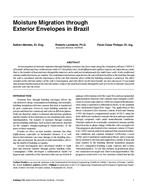Click here to purchase
Sensor networks are used in intelligent buildings due to their improved sensing, data communication, and environment control capabilities. New types of low-cost sensors have the potential to replace existing sensor networks in buildings and provide flexibility and customization, as well as monitoring of local environmental parameters. This study investigates the monitoring and control capabilities of new low-cost sensors, integrated with building control systems, and the impact on thermal conditions and energy use with different control complexities, compared to using conventional thermostats. First, the reliability, accuracy, and communication capabilities of low-cost thermal sensor networks are experimentally examined. Second, we use the new sensing options to develop and implement an overall framework of monitoring and control of indoor thermal conditions. Two control strategies, a simple PID control and an advanced Model-Predictive Control, were implemented into the Building Management System and applied in two adjacent identical office spaces, each equipped with both local sensing and a wall thermostat. The results show the advantages of using local sensing vs conventional wall thermostats in terms of the impact on energy use and personalized comfort, as well as the advantages of MPC over simple feedback control. The developed concept is flexible and can be embedded in existing control infrastructures or can be easily integrated in new system typologies.
Citation: 2021 Virtual Conference Papers
Product Details
- Published:
- 2021
- Number of Pages:
- 9
- Units of Measure:
- Dual
- File Size:
- 1 file , 1.5 MB
- Product Code(s):
- D-VC-21-C028


